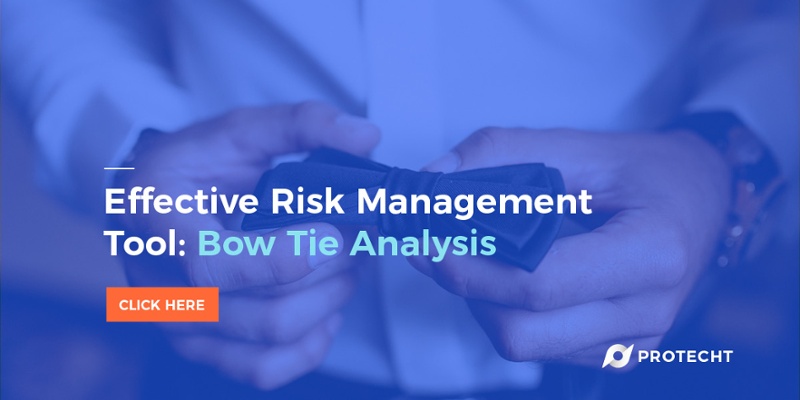Bow Ties usually conjure up a vision of a formal event, to be used infrequently for special occasions. For risk bow ties, nothing could be further from the truth. Risk Bow Ties are ideally used by the business as everyday wear. So what are Risk Bow Ties and what is the value of making them part of your everyday?
Bow Tie Risk Analysis
The Bow Tie principle to analyse and document risk has been attributed back to Royal Dutch Shell in the 70’s / 80’s. Since then, oil and gas, mining and pharmaceutical companies amongst others have used the Bow Tie technique to explore and communicate risk. More recently, financial institutions have warmed to the idea, seeing the benefit of this simple, yet comprehensive method to understand and communicate risk.
The Bow Tie technique is a logical way to explore and communicate risk. Its principles are simple, but the execution and presentation need care.
Basic Principles of a Bow Tie Analysis
I will attempt to explain the basic principles of the risk bow tie by way of a cooking analogy. Consider a pot of spaghetti with four ingredients. We will call them Causes, Events, Impacts, and Controls. The spaghetti links all of the ingredients together, but there are rules:
- Causes can only be at the beginning of a piece of spaghetti
- Impacts can only be at the end of a piece of spaghetti
- Events can only be somewhere in the middle of the spaghetti
- Controls can be anywhere
The spaghetti pot represents the risks in your business. Interconnected, complex and made up of different parts. Trying to analyse the complete pot in one go is too much for the human mind. As in most things that are overwhelming it is easier to look at a smaller subset of the whole.
Let’s call this subset a spaghetti serving. Using your hand, extract a portion of spaghetti but hold it in the middle of the spaghetti lengths. When you lift your hand, you will have half the spaghetti hanging from the left of your hand and the other half on the right.
Lay the spaghetti on a plate with the beginning of the spaghetti on the left and splay out the two ends while holding onto the centre.
No surprises, you will have a Bow Tie shape with the Cause ingredient on the left, the Event ingredients in the middle and the Impact ingredients on the right. Controls will attach everywhere.
Learn more about the Bow Tie Analysis
Interested in learning more? Click the banner below to download our eBook on the Bow Tie Analysis as an Effective Risk Management tool.

